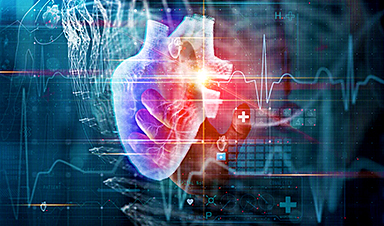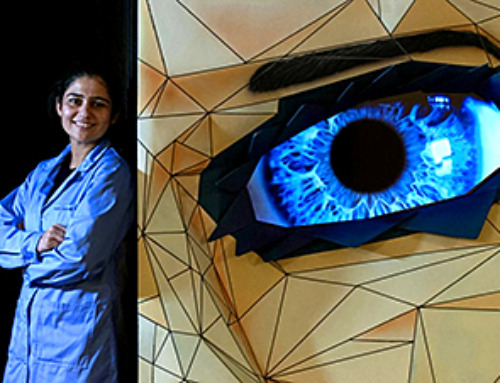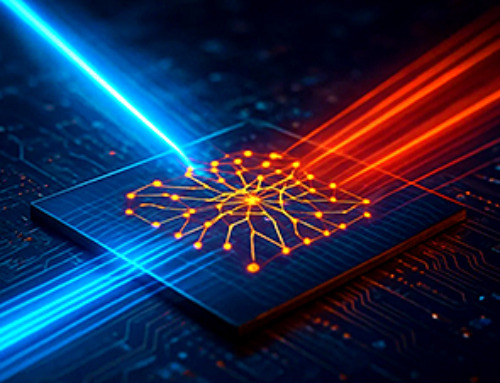Researchers from Tokyo Metropolitan University have found that the motion of unlabeled cells can be used to tell whether they are cancerous or healthy. They observed malignant fibrosarcoma cells and healthy fibroblasts on a dish and found that tracking and analysis of their paths can be used to differentiate them with up to 94% accuracy. Beyond diagnosis, their technique may also shed light on cell motility related functions, like tissue healing.
While scientists and medical experts have been looking at cells under the microscope for many centuries, most studies and diagnoses focus on their shape, what they contain, and where different parts are located inside. But cells are dynamic, changing over time, and are known to be able to move. By accurately tracking and analyzing their motion, we may be able to differentiate cells which have functions relying on cell migration. An important example is cancer metastasis, where the motility of cancerous cells allows them to spread.
However, this is easier said than done. For one, studying a small subset of cells can give biased results. Any accurate diagnostic technique would rely on automated, high-throughput tracking of a significant number of cells. Many methods then turn to fluorescent labeling, which makes cells much easier to see under the microscope. But this labeling procedure can itself affect their properties. The ultimate goal is an automated method which uses label-free conventional microscopy to characterize cell motility and show whether cells are healthy or not.
Now, a team of researchers from Tokyo Metropolitan University led by Professor Hiromi Miyoshi have come up with a way of tracking cells using phase-contrast microscopy, one of the most common ways of observing cells. Phase-contrast microscopy is entirely label free, allowing cells to move about on a petri dish closer to their native state, and is not affected by the optical properties of the plastic petri dishes through which cells are imaged. Through innovative image analysis, they were able to extract trajectories of many individual cells. They focused on properties of the paths taken, like migration speed, and how curvy the paths were, all of which would encode subtle differences in deformation and movement.
As a test, they compared healthy fibroblast cells, the key component of animal tissue, and malignant fibrosarcoma cells, cancerous cells which derive from fibrous connective tissue. They were able to show that the cells migrated in subtly different ways, as characterized by the “sum of turn angles” (how curvy the paths were), the frequency of shallow turns, and how quickly they moved. In fact, by combining both the sum of turn angles and how often they made shallow turns, they could predict whether a cell was cancerous or not with an accuracy of 94%.
The team’s work not only promises a new way to discriminate cancer cells, but applications to research of any biological function based on cell motility, like the healing of wounds and tissue growth.
This work was supported by JSPS KAKENHI Grant Number JP24K01998, Tokyo Metropolitan Government Advanced Research Grant Number R2-2, and the TMU Strategic Research Fund for Social Engagement.
Endo, S., et al. (2025). Development of label-free cell tracking for discrimination of the heterogeneous mesenchymal migration. PLoS ONE. doi.org/10.1371/journal.pone.0320287.
Image Credit:
News
Differentiating cancerous and healthy cells through motion analysis
Researchers from Tokyo Metropolitan University have found that the motion of unlabeled cells can be used to tell whether they are cancerous or healthy. They observed malignant fibrosarcoma cells and [...]
This Tiny Cellular Gate Could Be the Key to Curing Cancer – And Regrowing Hair
After more than five decades of mystery, scientists have finally unveiled the detailed structure and function of a long-theorized molecular machine in our mitochondria — the mitochondrial pyruvate carrier. This microscopic gatekeeper controls how [...]
Unlocking Vision’s Secrets: Researchers Reveal 3D Structure of Key Eye Protein
Researchers have uncovered the 3D structure of RBP3, a key protein in vision, revealing how it transports retinoids and fatty acids and how its dysfunction may lead to retinal diseases. Proteins play a critical [...]
5 Key Facts About Nanoplastics and How They Affect the Human Body
Nanoplastics are typically defined as plastic particles smaller than 1000 nanometers. These particles are increasingly being detected in human tissues: they can bypass biological barriers, accumulate in organs, and may influence health in ways [...]
Measles Is Back: Doctors Warn of Dangerous Surge Across the U.S.
Parents are encouraged to contact their pediatrician if their child has been exposed to measles or is showing symptoms. Pediatric infectious disease experts are emphasizing the critical importance of measles vaccination, as the highly [...]
AI at the Speed of Light: How Silicon Photonics Are Reinventing Hardware
A cutting-edge AI acceleration platform powered by light rather than electricity could revolutionize how AI is trained and deployed. Using photonic integrated circuits made from advanced III-V semiconductors, researchers have developed a system that vastly [...]
A Grain of Brain, 523 Million Synapses, Most Complicated Neuroscience Experiment Ever Attempted
A team of over 150 scientists has achieved what once seemed impossible: a complete wiring and activity map of a tiny section of a mammalian brain. This feat, part of the MICrONS Project, rivals [...]
The Secret “Radar” Bacteria Use To Outsmart Their Enemies
A chemical radar allows bacteria to sense and eliminate predators. Investigating how microorganisms communicate deepens our understanding of the complex ecological interactions that shape our environment is an area of key focus for the [...]
Psychologists explore ethical issues associated with human-AI relationships
It's becoming increasingly commonplace for people to develop intimate, long-term relationships with artificial intelligence (AI) technologies. At their extreme, people have "married" their AI companions in non-legally binding ceremonies, and at least two people [...]
When You Lose Weight, Where Does It Actually Go?
Most health professionals lack a clear understanding of how body fat is lost, often subscribing to misconceptions like fat converting to energy or muscle. The truth is, fat is actually broken down into carbon [...]
How Everyday Plastics Quietly Turn Into DNA-Damaging Nanoparticles
The same unique structure that makes plastic so versatile also makes it susceptible to breaking down into harmful micro- and nanoscale particles. The world is saturated with trillions of microscopic and nanoscopic plastic particles, some smaller [...]
AI Outperforms Physicians in Real-World Urgent Care Decisions, Study Finds
The study, conducted at the virtual urgent care clinic Cedars-Sinai Connect in LA, compared recommendations given in about 500 visits of adult patients with relatively common symptoms – respiratory, urinary, eye, vaginal and dental. [...]
Challenging the Big Bang: A Multi-Singularity Origin for the Universe
In a study published in the journal Classical and Quantum Gravity, Dr. Richard Lieu, a physics professor at The University of Alabama in Huntsville (UAH), which is a part of The University of Alabama System, suggests that [...]
New drug restores vision by regenerating retinal nerves
Vision is one of the most crucial human senses, yet over 300 million people worldwide are at risk of vision loss due to various retinal diseases. While recent advancements in retinal disease treatments have [...]
Shingles vaccine cuts dementia risk by 20%, new study shows
A shingles shot may do more than prevent rash — it could help shield the aging brain from dementia, according to a landmark study using real-world data from the UK. A routine vaccine could [...]
AI Predicts Sudden Cardiac Arrest Days Before It Strikes
AI can now predict deadly heart arrhythmias up to two weeks in advance, potentially transforming cardiac care. Artificial intelligence could play a key role in preventing many cases of sudden cardiac death, according to [...]




















